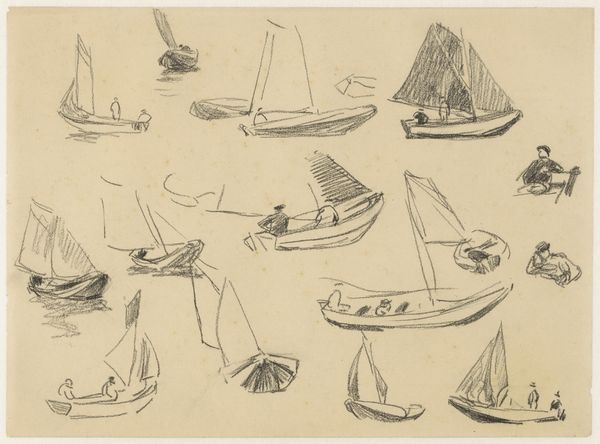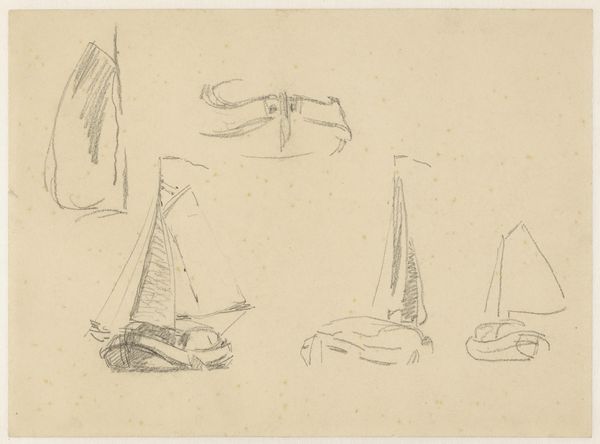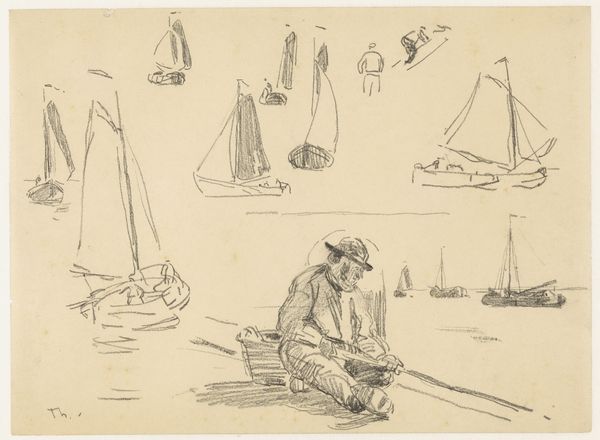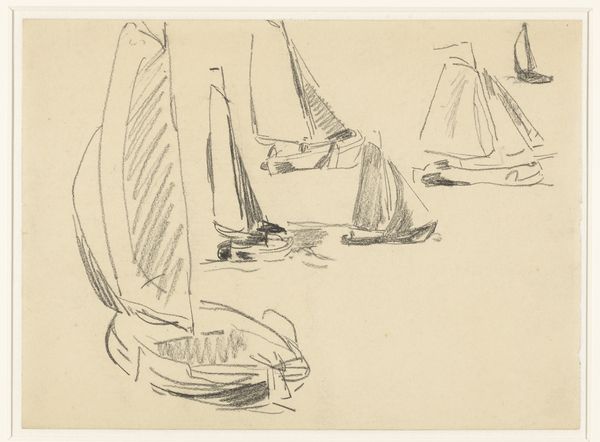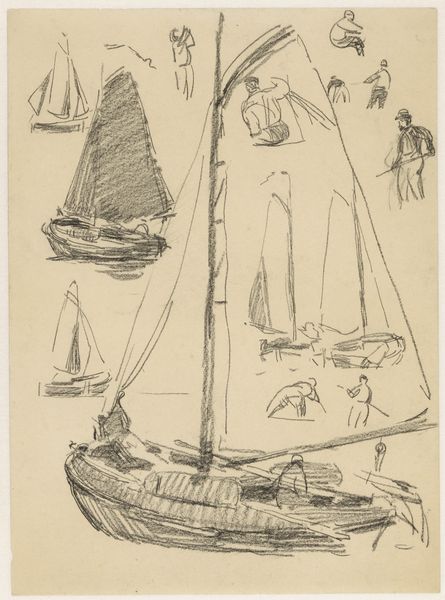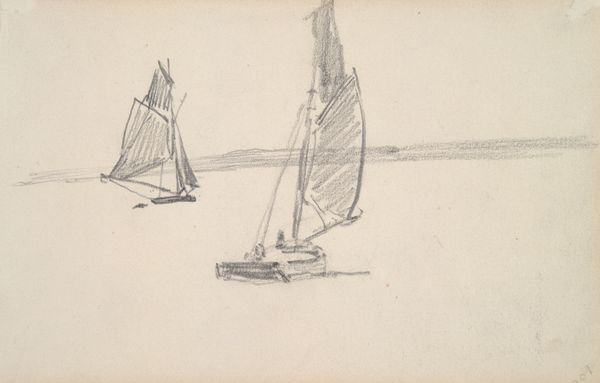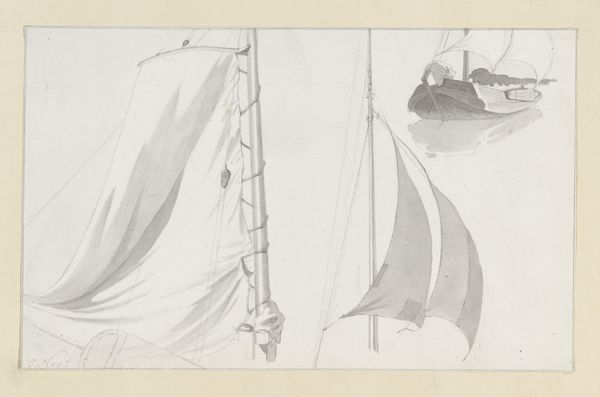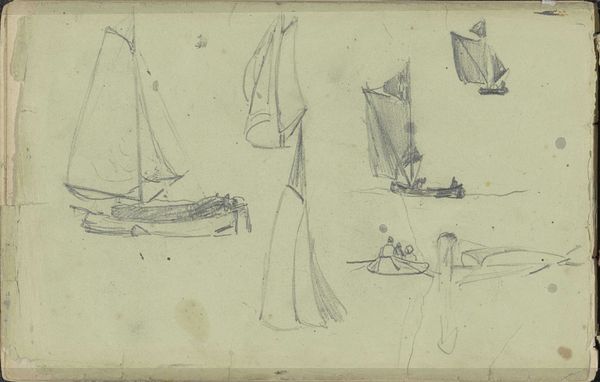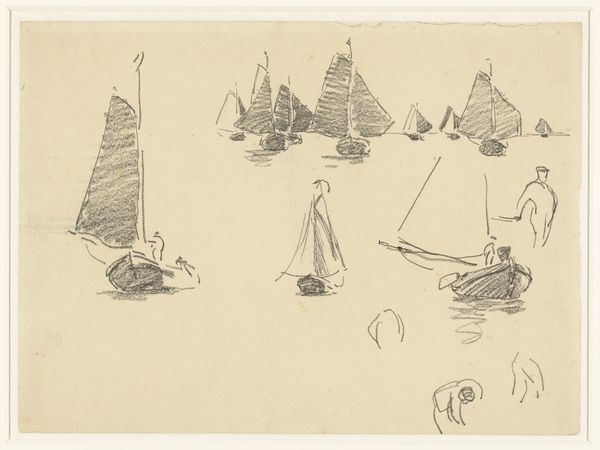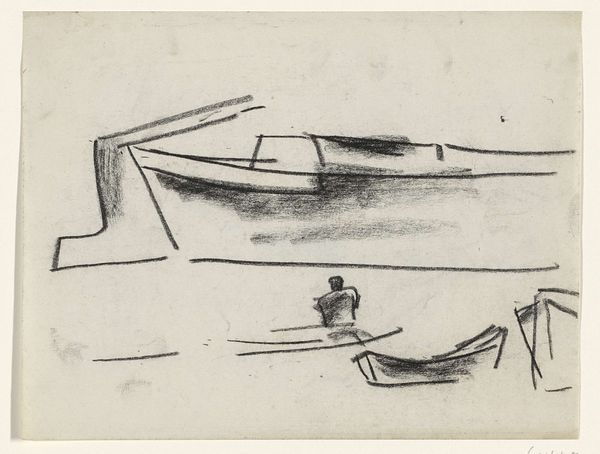
Studieblad met drie zeilschepen en enkele figuren 1870 - 1931
0:00
0:00
willembastiaantholen
Rijksmuseum
Dimensions: height 225 mm, width 307 mm
Copyright: Rijks Museum: Open Domain
Curator: Willem Bastiaan Tholen created this work, "Studieblad met drie zeilschepen en enkele figuren," sometime between 1870 and 1931. It's an ink and pencil drawing on paper currently held here at the Rijksmuseum. Editor: My first impression is that it feels wonderfully spontaneous and informal, almost like a glimpse into the artist's notebook. The composition, a cluster of ships and figures, conveys a lively scene despite the minimal detail. Curator: Absolutely, the rapid strokes speak to the artist’s process. Looking closely, one can almost visualize Tholen’s hand swiftly moving across the page, capturing fleeting observations. Notice how the economical use of line creates volume and form, reflecting the immediate capture of a specific atmosphere. And what might have informed Tholen's interest in the labor and life surrounding these boats? Was he commenting on the socioeconomic structures dependent on these maritime activities? Editor: It’s compelling to think about those connections, especially given the late 19th-century context of shifting economies and social stratifications tied to maritime work. It makes me consider whose stories are often overlooked in traditional narratives of maritime paintings – not just the captains, but the dockworkers, sailors, and even the unseen women supporting these industries on shore. The work itself seems like an attempt to bring some attention to this population. Curator: Indeed, this connects with a larger shift in artistic attention towards more humble and quotidian subject matter. And let’s not forget the material conditions. Ink and pencil on paper – these are readily available, relatively inexpensive tools. Did the choice of medium democratize art production or enable accessibility, or perhaps Tholen considered those elements inconsequential? Editor: I’m also intrigued by the scale and what this immediacy reveals about gender roles, or perhaps the intended audience, during that time period. It seems like it was done very quickly and for study, maybe something to show a collector later on. Were the buyers even local to the areas depicted in the works? What social or cultural expectations shaped these artistic representations, and whose perspectives do they represent? Curator: Food for thought! The beauty of this unassuming drawing lies in its ability to simultaneously function as a quick study of form and a window onto broader questions surrounding labor, identity, and artistic intention. Editor: Exactly, examining this "Studieblad" allows us to question whose stories and whose realities were given value through artistic representation, and who got to consume it. It feels surprisingly relevant to contemporary conversations about representation and equity.
Comments
No comments
Be the first to comment and join the conversation on the ultimate creative platform.
